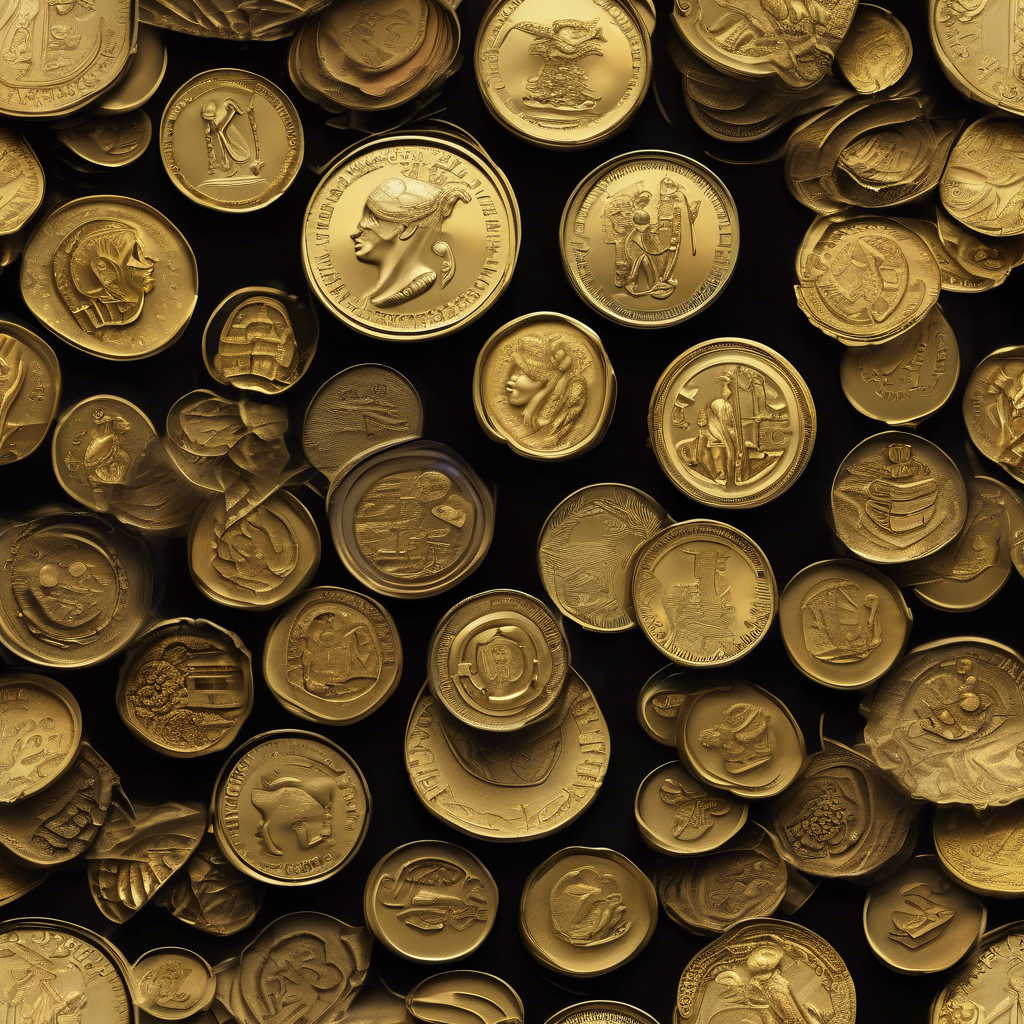Understanding the Value of Gold Coins in Investment
Investing in gold coins has been a time-honored strategy for wealth preservation and growth. In recent years, many investors have turned their attention to gold coins as a viable option for diversifying their portfolios. The allure of gold coins lies not only in their intrinsic metal value but also in their historical significance and aesthetic appeal.
Key Factors to Consider When Buying Gold Coins
When evaluating buying gold coins, several crucial factors come into play. Understanding these aspects can help you make informed decisions and maximize your investment potential.
1. Assess the Gold Coin’s Purity
The purity of gold coins is measured in karats, with 24 karats being the highest. It’s essential to ensure that the coins you are considering are made of high-purity gold, as this significantly impacts their value. Coins with a purity of 22 karats (91.67% gold) are also common and can be a good investment choice.
2. Research the Coin’s Market Demand
Market demand for specific gold coins can fluctuate based on various factors, including collector interest and economic conditions. Before making a purchase, research gold demand trends to understand which coins are currently sought after. This knowledge can guide you toward coins that are likely to appreciate in value.
3. Verify the Coin’s Authenticity
Counterfeit gold coins are a prevalent issue in the market. Always buy from reputable dealers who provide a certificate of authenticity. Investing in gold coins without verifying their authenticity can lead to significant financial loss. Consider consulting resources such as tips from experienced dealers to ensure you make safe purchases.
4. Understand the Premium Over Spot Price
Gold coins usually sell at a premium over the current spot price of gold. This premium can vary based on factors like the coin’s rarity, demand, and condition. It is essential to evaluate the premium you are willing to pay and compare it with other investment options such as gold ETFs or bullion.
5. Consider Storage and Insurance Costs
Owning physical gold coins entails storage and insurance costs, which should be factored into your investment calculations. Safe storage options include bank safety deposit boxes or secure home safes. Additionally, insuring your collection can protect against theft or loss.
6. Long-Term vs. Short-Term Investment
Decide whether you are looking for a short-term trading opportunity or a long-term investment. Gold coins can serve both purposes, but your strategy will dictate which coins to buy. For long-term investments, focus on coins with historical significance or those that are part of a collectible series.
Ultimately, evaluating buying gold coins requires thorough research and an understanding of the market. By considering purity, demand, authenticity, price premiums, storage, and your investment goals, you can make informed decisions that align with your financial objectives.
Evaluating Different Types of Gold Coins
When investing in gold coins, understanding the various types available can significantly influence your investment strategy. Each type of gold coin has its unique features that can affect its value and appeal to different types of investors.
1. Bullion Coins
Bullion coins are primarily valued for their gold content rather than their numismatic value. Popular options include the American Gold Eagle and the Canadian Maple Leaf. These coins are often sought after for their high purity (usually 22 karats) and are an excellent option for those looking to invest in gold as a hedge against inflation.
2. Numismatic Coins
Numismatic coins are collectible coins that derive their value from rarity, demand, and historical significance rather than just their gold content. Investing in numismatic coins can be lucrative but requires a deeper understanding of the market. Research the best strategies for gold investment to ensure you are making informed choices.
3. Commemorative Coins
Commemorative coins are issued to mark significant events or anniversaries. These coins can attract collectors and investors alike, as their rarity can lead to increased value over time. However, it’s essential to understand the demand for these coins before investing.
Understanding Gold Coin Grading
The grading of gold coins is a critical factor that influences their market value. Coins are graded on a scale that typically ranges from Poor (P-1) to Mint State (MS-70). Higher grades indicate better condition and can fetch significantly higher prices in the market.
1. Importance of Professional Grading
Having your coins professionally graded by organizations such as the Professional Coin Grading Service (PCGS) can enhance their resale value. Understanding how grading impacts the value of your investment can help you make smarter buying decisions.
2. Impact on Investment Returns
Investors should consider how the grade of a coin will affect their potential returns. Higher-grade coins tend to maintain their value better over time and can be more liquid in the market, making them an attractive choice for serious collectors and investors.
Strategies for Selling Gold Coins
When the time comes to sell your gold coins, having a solid strategy is essential to maximizing your returns. Here are some key considerations:
1. Timing the Market
Understanding market trends and key factors that influence gold prices can help you decide the best time to sell. For instance, consider factors like global supply and demand trends, which can significantly impact gold prices.
2. Choosing the Right Selling Platform
Different platforms for selling gold coins include online marketplaces, auctions, or local dealers. Each option has its pros and cons, and understanding these can enhance your selling experience. Research the best practices for evaluating gold prices to ensure you get a fair deal.
3. Documenting Your Coins
Keep detailed records of your coins, including their purchase price, grade, and market value at the time of sale. This documentation can be invaluable when negotiating with potential buyers and can substantiate the value of your collection.
Investing in gold coins can be a rewarding venture, but it requires careful consideration and strategic planning. By understanding the different types of gold coins, their grading, and effective selling strategies, you can maximize your investment potential and secure your financial future.
Exploring Market Trends in Gold Coin Investments
Understanding market trends is crucial for any investor seeking to maximize their returns on gold coins. The gold market is influenced by various factors, including geopolitical events, economic conditions, and shifts in supply and demand dynamics. Staying informed about these trends can help you make strategic investment decisions.
1. Monitoring Global Economic Conditions
Gold often serves as a safe-haven asset during economic downturns. Investors should keep an eye on global economic indicators, such as inflation rates and currency fluctuations, which can heavily influence gold prices. By analyzing these conditions, you can better time your investments and sales.
2. Staying Updated on Political Developments
Political instability can lead to increased demand for gold as a hedge against uncertainty. Regularly follow news on major global political events and their potential impact on gold prices. This knowledge can guide you in adjusting your investment strategies accordingly. For instance, understanding how central bank policies affect gold can be pivotal.
Understanding the Importance of Diversification in Gold Investments
Diversifying your gold investment portfolio can help mitigate risks and enhance potential returns. By exploring different avenues within the gold market, you can protect yourself against fluctuations in any single investment type.
1. Investing in Various Gold Products
Consider diversifying your gold investments by exploring various products, including gold coins, bullion, and gold ETFs. Each product has its unique characteristics and advantages, allowing you to balance your portfolio effectively. For a comprehensive overview of these options, check out this guide on gold investment types.
2. Balancing Physical and Digital Gold Investments
Investors should also weigh the benefits of physical gold, such as coins and bars, against digital forms, like gold ETFs. While physical gold provides tangible ownership, digital gold offers ease of trading and liquidity. Understanding the pros and cons of each can help you create a balanced investment strategy.
Identifying Reliable Gold Dealers for Your Investments
Choosing the right dealer is vital for ensuring fair pricing and reliable transactions when buying gold coins. Here are some tips for identifying trustworthy dealers:
1. Research and Reviews
Before making a purchase, always conduct thorough research on potential dealers. Check online reviews and ratings to gauge their reputation. Reliable dealers should have a solid track record of customer satisfaction and transparent pricing practices.
2. Authenticity and Certification
Ensure that the dealer provides authenticity certification for the gold coins you intend to purchase. This certification confirms the coin’s purity and value, protecting you from counterfeit products. Familiarize yourself with reputable grading services, such as the Professional Coin Grading Service (PCGS), to ensure quality.
Leveraging Technology for Gold Coin Investment Insights
In this digital age, technology plays a significant role in enhancing the investment experience. Utilize various online tools and resources to gain insights into gold market trends and pricing strategies.
1. Online Market Analysis Tools
Many platforms offer market analysis tools that provide real-time data on gold prices, trends, and forecasts. Leveraging these resources can help you make informed decisions and stay ahead in the competitive gold market. Consider utilizing tools that analyze gold price forecasts to optimize your buying and selling strategies.
2. Educational Resources
Don’t underestimate the value of educational resources. Websites, webinars, and online courses can provide valuable insights into gold investing techniques and strategies. Staying educated is essential for navigating the complexities of the gold market effectively.
Evaluating Gold Market Opportunities for Investment Growth
Identifying lucrative opportunities within the gold market is essential for maximizing your investment returns. By staying vigilant and recognizing potential market shifts, you can position yourself advantageously.
1. Analyzing Seasonal Trends in Gold Prices
Gold prices often exhibit seasonal patterns influenced by various factors, including demand during holiday seasons and economic cycles. Understanding these trends can help you time your purchases and sales strategically. For instance, many investors find that gold prices tend to rise during the festive season due to increased demand for gold jewelry. Observing these patterns can lead to more informed investment decisions.
2. Exploring Emerging Markets for Gold Demand
As global economies evolve, emerging markets present new opportunities for gold investment. Countries with growing middle classes, such as India and China, often see increased demand for gold. By keeping an eye on these regions, you can tap into new markets and potentially enhance your returns. Research the factors driving gold demand in these areas, such as cultural significance and investment trends.
Utilizing Alternative Gold Investment Vehicles
In addition to traditional gold coins, there are various alternative investment vehicles worth considering. Each option presents unique benefits that can diversify your portfolio.
1. Gold ETFs: A Flexible Investment Option
Gold exchange-traded funds (ETFs) offer an accessible way to invest in gold without the need for physical storage. These funds track the price of gold and provide liquidity, allowing investors to buy and sell shares easily. For those looking to enter the gold market with minimal hassle, understanding how to invest in gold ETFs can be a game-changer.
2. Gold Mining Stocks: Capitalizing on Company Performance
Investing in gold mining stocks allows you to benefit from the company’s operational efficiency and profitability. If gold prices rise, mining companies can see substantial profit increases, leading to stock price appreciation. However, it’s essential to conduct thorough research on the mining companies’ performance and market conditions. Explore insights on top gold mining stocks to identify viable investment opportunities.
Understanding the Impact of Economic Indicators on Gold Prices
Economic indicators play a significant role in determining gold prices. Being well-versed in these indicators can help you make informed investment choices.
1. Interest Rates and Inflation
Gold often serves as a hedge against inflation. When interest rates are low, the opportunity cost of holding gold decreases, typically leading to increased demand and higher prices. Monitoring interest rate trends and inflationary pressures can provide valuable insights into future gold price movements.
2. Currency Strength and Gold Valuation
The strength of the U.S. dollar is inversely related to gold prices. A weaker dollar typically boosts gold prices as investors seek refuge in the precious metal. Understanding the relationship between currency strength and gold valuation is crucial for anticipating market shifts.
Conclusion: Staying Ahead in Gold Coin Investments
Investing in gold coins requires a keen understanding of market dynamics and strategic planning. By evaluating market trends, diversifying your investment portfolio, and leveraging technology, you can enhance your chances of success. Stay informed and proactive to maximize your returns in this ever-evolving market.
Comprehensive FAQ Section on Gold Investments
1. What are the best ways to invest in gold?
Investing in gold can be approached through various methods, including physical gold (coins and bars), gold ETFs, gold mining stocks, and gold mutual funds. Each method has its benefits and risks, so it’s essential to choose the one that aligns with your investment goals.
2. How do gold prices fluctuate?
Gold prices fluctuate based on supply and demand dynamics, economic indicators, geopolitical events, and market sentiment. Factors such as inflation rates, currency strength, and interest rates significantly influence the price of gold.
3. Is investing in gold a good hedge against inflation?
Yes, gold is often considered a hedge against inflation. As the cost of living rises, the value of gold typically increases, making it a safe asset for preserving purchasing power.
4. What are the risks associated with gold investments?
Risks include price volatility, changes in market demand, and potential storage costs for physical gold. Additionally, investing in mining stocks carries risks related to the company’s operational performance.
5. How can I assess the performance of gold mining stocks?
To assess gold mining stocks, review key performance indicators such as production costs, profit margins, and the company’s ability to manage resources effectively. Keeping tabs on gold prices and market trends is also essential.
6. How do geopolitical events affect gold prices?
Gold is often seen as a safe haven during times of geopolitical uncertainty. Events such as wars, political instability, or economic crises can lead to increased demand for gold, driving prices higher.
7. What is the impact of currency fluctuations on gold investments?
The strength of the U.S. dollar inversely affects gold prices. A weaker dollar makes gold cheaper for foreign investors, increasing demand and potentially raising prices.
8. How can I diversify my gold investment portfolio?
Diversifying your gold portfolio can involve investing in a mix of physical gold, gold ETFs, and gold mining stocks. Additionally, consider exploring different geographic markets for further diversification.
9. Are there tax implications for investing in gold?
Yes, profits from gold investments can be subject to capital gains taxes. The tax treatment may vary depending on whether you invest in physical gold, ETFs, or mining stocks, so it’s advisable to consult a tax professional.
10. Where can I find reliable information about gold investments?
Reliable resources include financial news websites, market analysis reports, and expert opinions from reputable investment firms. Websites like the World Gold Council and financial publications can also provide valuable insights.
Authority Resources for Gold Investment Insights
To deepen your understanding of gold investments, consider exploring the following trusted resources:
- World Gold Council – Provides comprehensive data and research on gold markets and trends.
- Investopedia – A valuable source for understanding investment strategies, including gold.
- Kitco – Offers real-time gold prices and market analysis.
- Bloomberg – Provides financial news and market insights relevant to gold investments.
- MarketWatch – A platform for tracking gold prices and market trends.
Conclusion: Your Path to Successful Gold Investments
In summary, investing in gold requires a multifaceted approach that involves understanding market dynamics, diversifying your portfolio, and leveraging various investment vehicles. By staying informed and utilizing trustworthy resources, you can maximize your investment returns in the gold sector. As you navigate the complex landscape of gold investments, remember that being proactive and adaptable will enhance your chances of success in this precious metal market.











The detailed overview of factors when evaluating buying gold coins really highlighted some points I hadn’t fully considered before. Particularly, the importance of understanding the premium over spot price stood out to me. I previously assumed that the purchase price of a gold coin was mainly about the gold content, but this post clarifies how rarity, demand, and condition can add significant costs—and potential value. Also, the section on coin grading is crucial; I’ve found through experience that professionally graded coins tend to be more liquid and reliable investments, especially when selling. The emphasis on verifying authenticity is a must. After reading this, I’m planning to be more cautious and thorough by sticking with reputable dealers who provide certification. Finally, the recommendation to diversify between bullion coins, numismatic coins, and even gold ETFs is a great reminder that balancing tangible assets with more liquid ones can reduce risks. Gold often seems straightforward, but the intricacies of various coin types and market forces make it more complex—and more interesting as an investment.
This post offers a comprehensive insight into what potential gold investors should focus on. From my experience, the importance of understanding the market demand really cannot be overstated. I’ve seen many beginners overlook how collector interest and current economic climates influence gold prices, especially for rarer coins. Personally, I once bought a coin thinking it was undervalued, only to realize later it wasn’t in high demand, which made resale much harder. It’s a good reminder to do thorough research before purchasing.
I really appreciate this detailed overview of what to consider when investing in gold coins. One aspect that caught my attention is the importance of grading and authenticity verification. From my own experience, I’ve found that purchasing from reputable dealers who provide certification not only safeguards your investment but also makes the resale process smoother down the line. Additionally, I’ve noticed that the market demand for certain coin types, especially collectible or commemorative coins, fluctuates quite a bit depending on geopolitical and economic factors. It can be tricky to predict which will appreciate in value, but doing thorough research into demand trends specifically related to geopolitical stability or cultural relevance can offer some strategic insights. Have others found that focusing on coins with historical significance or unique designs tends to yield better long-term appreciation? Or do bullion coins generally outperform in terms of stability? Would love to hear different perspectives or personal experiences on balancing these strategies.